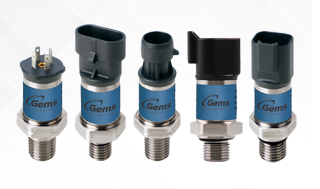Total Error Band (or TEB) is a characteristic in pressure sensors that takes into consideration ALL of the potential errors that the sensor might exhibit, not just one error in particular. This way, the customer has a better idea of what real world values they can be expecting from the sensor.

TEB takes into consideration:
- Accuracy:
- Non-linearity: How straight of a line is the electrical output from the device compared to the actual pressure value.
- Hysteresis: After a system has a pressure change and returns to the normal condition, how a device lags when returning to its original condition.
- Non-Repeatability: When a device is cycled numerous times, how close does it come to its original measurement.
- Non-linearity: How straight of a line is the electrical output from the device compared to the actual pressure value.
- Zero Offset Error: With no pressure on the sensor, how close the sensor’s output is to actual Zero.
- Full Scale Span Error: With the maximum pressure on the sensor, how close the sensor’s output is to the actual pressure.
- Thermal Zero Offset Error: The error on the output due to temperature changes with no pressure on the sensor.
- Thermal Full Scale Span Error: The error on the output due to temperature changes with full pressure on the sensor.
Knowing what the Total Error Band is for a sensor is a significant benefit for the customer. For example, when the 1100 Series Pressure Sensor is used in an extreme temperature application (like a windmill monitoring the hydraulics for pitch, yaw and rotational speed in the desert) the sensor needs to be reliable and accurate, even as the temperature starts to increase and gets very hot in the middle of the day.
A basic law of pressure measuring is that pressure rises as temperature rises. The 1100 Series Pressure Sensor uses on-board temperature monitoring circuitry that adjusts the sensor’s output as the temperature changes. This way, the sensor’s output is much closer to the real-world pressure reading and not skewed by an increase in temperature. The 1100 series specifies this via its Compensated Temperature Error specification of 1% over -4°F to +185°F (-20C to +85C). This small error is a significant benefit for the customer for they know that even if it gets very hot in the application, their readings will be within 1% of the actual pressure. This secures them an overall solid system performance.

Markets / Industries:
Adjacent Products:
- CAP-300 / CAP-3: Coolant level, solid-state
- XLS-1: Fluid levels, solid state
- PS75: Hydraulic and brake pressure levels heavy duty pressure switch
 SEARCH OUR RESOURCE CENTER
SEARCH OUR RESOURCE CENTER

